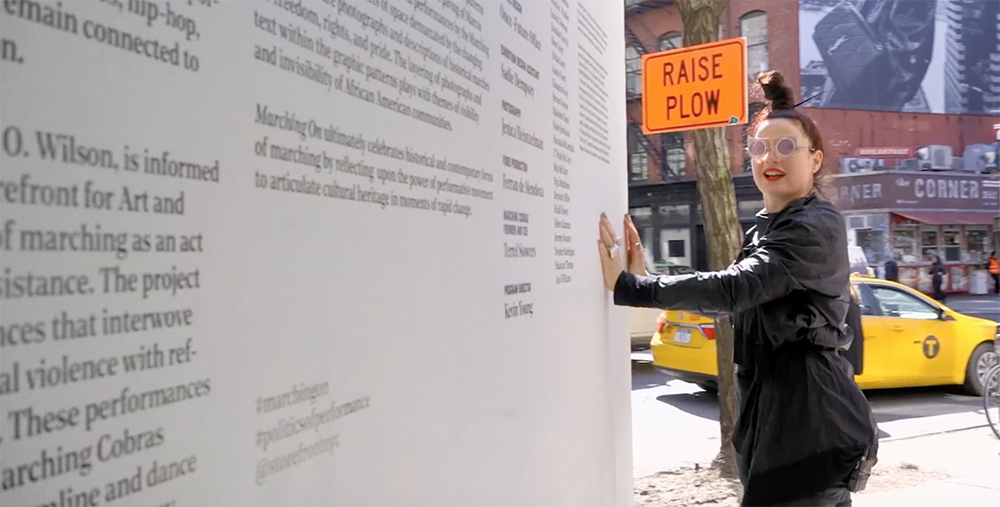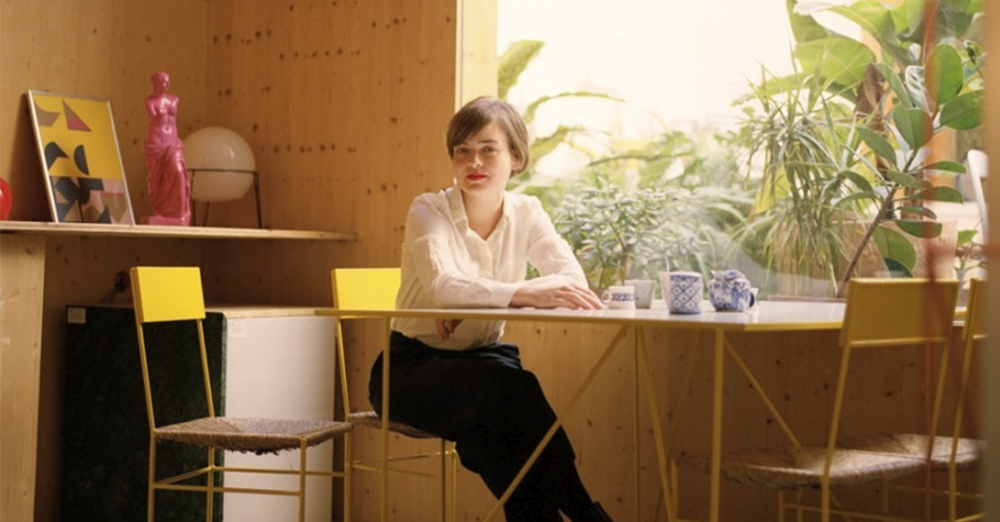Catalan architects thrive from NY to London
ho
Eva Franch and Anna Puigjaner represent a new generation questioning the status quo, redefining architecture and breaking the glass ceiling.

From NY to London and From London to NY. Eva Franch i Gilabert and Anna Puigjaner are two Catalan architects crossing paths, redefining architecture and representing a new generation of female leaders questioning the status quo and breaking the glass ceiling. They have both been awarded by FAD in the past and it is delightful to see how they have kept on accumulating recognition around the world.
Eva Franch i Gilabert: from NY to London
After eight years directing New York’s Storefront for Art and Architecture, the catalan architect Eva Franch i Gilabert was elected as director of the Architectural Association in London, a role she took up last July.

Eva started working as a student at the Gaudí Catedra – a research centre in Barcelona dedicated to the architect Antoni Gaudí – helping with the cataloguing of Gaudí’s drawings. Her first internship in a firm was in Rotterdam, where public buildings, large master-planning, and social housing became her main focus. After winning enough competitions she moved back to Barcelona, where she started her firm OOAA (Office of Architectural Affairs) to produce projects independently. At 24, she obtained the La Caixa full fellowship to study in Princeton, where she obtained her Master of Architecture II Degree in 2007. That same year she was recognized as an emerging architect by our association and exhibited her project “Perfect Doubts: 39 questions to Architecture” at FAD’s Incubator of emerging talents.
Eva’s work has always posed questions, so it is little wonder she has mainly practised architecture as a teacher and as a curator, two jobs based on questioning knowledge rather than merely presenting it. She is also fearless, she gained the directorship of NY’s Storefront for Art and Architecture when very young, a stranger and without previous experience in directing. Now, after eight years in the post, she has been appointed the first female director of the Architectural Association in London, one of the most influential architecture schools in the world, yet deeply crisis-hit following a period of turmoil that has seen protests from famous alumni including Rem Koolhaas, Toyo Ito and Richard Rogers over a round of redundancies aimed at cutting costs.
When asked for her reasons to apply for the role she pointed to a sense of responsibility induced by her love for architecture: “The AA has played a seminal role within architecture culture. As someone who decided to engage in the production and redefinition of architecture culture, I consider it seminal that one of the most radical and influential architecture institutions in the world continues to inspire and to transform the way we teach, communicate and produce ideas and architecture. It is not only a school that relates to its student body, or its members, but also an institution that the entire architecture community looks at and looks after. Many people will assert that it has gone through some difficult times. Architecture, in some way, needs the AA to do well and in that sense we all realized someone had to do the job. While we all know it is not an easy one, it is an important one. I did apply to the director’s job with a sense of duty, and on behalf, if you want, of all of those who care about architecture and how it relates to the world we live in. The AA needed someone to take it to its future, and I believed I could contribute to it.”
Regarding her views on the future of architecture education and her plans for the AA Franch asserts: “Historically, it has been a place where architecture meets other forms of expertise to produce new synthetic thought, form, and action. While architecture schools usually are concerned about what architecture has been, I am also interested in what architecture can be. (…) While in the past decades there has been a focus in the specialisation and the atomisation of architecture practice and expertise, architecture is one of the only disciplines that has the privilege and responsibility to bring all the spheres of society together. To bring politics, ethics, and aesthetics into a new form of collective aspiration. Bringing technology, biology, sociology, philosophy, poetry, law, economics and more together is something that the AA has been doing and that I plan to continue to do. Stephen Hawking lectured here in 1999 talking about Space, Time, Reality. Or more recently this January, Brian Eno talked about the consequences that universal basic income could have in the making of our communities, among many other topics. I am interested in bringing architects into conversation with other disciplines. I am interested in creating a pedagogical project that directly addresses architecture’s power in the transformation, construction, and imagination of a better life and built environment. I plan to produce a culture of research and design practice that is able to address the social, political, and spatial conditions through a forum of experimentation guided by aesthetic and ethical modes of practice. I envision a school that enables new collectivities, that agitates and questions existing power structures, and that experiments with new aesthetics able to produce a powerful set of tools to positively affect the world in which we live.”
With her outstanding career, her sharp vision of architecture and its potential, her enthusiastic leadership and her interest in generating questions, we celebrate her new position and we can’t wait to see what she will achieve as head of the AA.
Anna Puigjaner: from London to New York
Anna Puigjaner is a co-founder of the Barcelona based architectural practice MAIO. Although she is working and lecturing internationally, she is sort of crossing paths with Franch and making a move from London – where she has been teaching at the Royal College of Art – to NYC, where she has just started teaching at Columbia’s Graduate School of Architecture, Planning and Preservation.

Despite her move to the USA, where in 2016 she was the recipient of Harvard University’s Wheelwright Prize – awarded annually to early-career architects who have demonstrated exceptional design talent, produced work of scholarly and professional merit, and who show promise for continued creative work – her work is still very present in London. MAIO kicked off the Royal Academy of Art’s new Architecture Studio this past May with the first act of the three part installation Invisible Landscapes, in which they converted the studio into a smart home where boundaries between public and private, urban and domestic spheres were blurred by technology and by an increasingly contemporary kind of architecture without walls. In June, Puigjaner also presented her work at the Barbican Centre’s Architecture on Stage series in front of a jam-packed auditorium.
Puigjaner’s most recent research project, The Kitchenless City – developed with the funding from the Wheelwright Prize and following up her Phd Thesis on NY’s Waldorf Astoria Apartment – examines a contentious question: could we live without a kitchen? To explore this radical proposal, she spent a year and a half looking at examples of collective housing – in Brazil, Sweden, Russia, Korea, and elsewhere – which reflect a variety of approaches to organising and distributing domestic spaces. The fact that nowadays we can’t accept living without a kitchen irks her in an age in which we seem to spend less and less time at home, and the culture of services and sharing are increasingly present in our day to day life.
Puigjaner shares with Franch this desire to question everything, and this foregrounds in almost all her projects. From her grid compartimentation of MACBA’s white cube space for the exhibition “Species of Spaces”, to the non-hierarchical forum-based distribution for the “Design Does” exhibition at Barcelona’s Design Museum and also in one of her latest built projects in Barcelona, where she challenged the traditional housing model and proposed a more dynamic distribution to domestic spaces, one that is modular and versatile rather than hierarchical and static. Its name, 110 rooms, is already a declaration of principles. It refers to the total number of rooms that conform the 22-unit apartment building, designed to be more or less interchangeable (including the kitchen!) and therefore allowing alternative and not only normative modes of living. The project was awarded a FAD Award in 2017.
Both architects share a sense of duty in championing their crisis-hit discipline, defending their imbrication with other fields and transmitting not only their passion for architecture, but a sense of urgency in their responsibility as architects to the upcoming generations. Their fearless leadership but down to earth approach, their passionate research and teaching, their spot on exhibitions and distinctive built projects are worth celebrating, and FAD, as a multidisciplinary association looking to foster the best art, design and architecture practices, will keep highlighting their inspiring steps, and questioning, in their spirit, whatever comes as given.
Author: Sol Polo